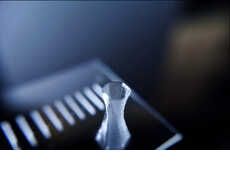
Cambrian Genomics Could Generate Creatures That Never Existed
Meghan Young — January 26, 2015 — Unique
References: cambriangenomics & 3dprintingindustry
The 3D printing industry is becoming so sophisticate that one company, Cambrian Genomics, is claiming the ability to print living strands of DNA. By combining lasers and 3D printers, this is much more than a claim. Austen Heinz, who co-funded Cambrian Genomics, states, “This technology is going to allow us to actually bring back dinosaurs, bring back extinct species, make life forms that help us live in space and go to other planets."
Although still a far-fetched concept, Cambrian Genomics has recently made some huge strides in the investor sphere. Yet in spite of racking up $10 million in private funding, there are many controversial and ethical issues that surround Cambrian Genomics as a business. After all, it is essentially dabbling in the role of God. Heinz says, "[T]his is a technology that can create planets."
Although still a far-fetched concept, Cambrian Genomics has recently made some huge strides in the investor sphere. Yet in spite of racking up $10 million in private funding, there are many controversial and ethical issues that surround Cambrian Genomics as a business. After all, it is essentially dabbling in the role of God. Heinz says, "[T]his is a technology that can create planets."
Trend Themes
1. DNA 3d-printing - The ability to print living strands of DNA using 3D printing technology opens up the potential for disrupting the healthcare industry through personalized medicine and genetic engineering.
2. Bioengineered Species - The concept of bringing back extinct species or creating entirely new life forms through DNA 3D-printing presents disruptive innovation opportunities in the field of conservation and biodiversity preservation.
3. Interplanetary Life Forms - Creating life forms that can survive in space and aid space exploration through DNA 3D-printing technology creates possibilities for disrupting the aerospace industry.
Industry Implications
1. Healthcare - The application of DNA 3D-printing in healthcare can revolutionize treatments, drug development, and personalized medicine.
2. Conservation - DNA 3D-printing has the potential to disrupt the conservation industry by enabling the revival of endangered species or the creation of bioengineered organisms to restore ecosystems.
3. Aerospace - DNA 3D-printing technology could disrupt the aerospace industry by providing the ability to engineer life forms suitable for surviving and thriving in space environments.
2.9
Score
Popularity
Activity
Freshness























